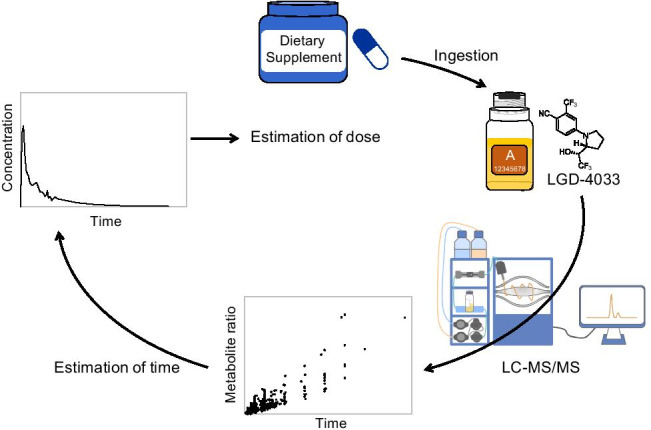- Record: found
- Abstract: found
- Article: found
Investigations into the elimination profiles and metabolite ratios of micro-dosed selective androgen receptor modulator LGD-4033 for doping control purposes

Read this article at
Graphical abstract
LGD-4033 (ligandrol) is a selective androgen receptor modulator (SARM), which is prohibited in sports by the World Anti-Doping Agency (WADA) and led to 62 adverse analytical findings (AAFs) in 2019. But not only deliberate doping with LGD-4033 constitutes a problem. In the past years, some AAFs that concerned SARMs can be attributed to contaminated dietary supplements (DS). Thus, the urgency to develop methods to differentiate between inadvertent doping and abuse of SARMs to benefit from the performance-enhancing effect of the compound in sports is growing. To gain a better understanding of the metabolism and excretion patterns of LGD-4033, human micro-dose excretion studies at 1, 10, and 50 µg LGD-4033 were conducted. Collected urine samples were prepared for analysis using enzymatic hydrolysis followed by solid-phase extraction and analyzed via LC-HRMS/MS. Including isomers, a total of 15 phase I metabolites were detected in the urine samples. The LC-HRMS/MS method was validated for qualitative detection of LGD-4033, allowing for a limit of detection (LOD) of 8 pg/mL. The metabolite M1, representing the epimer of LGD-4033, was synthesized and the structure elucidated by NMR spectroscopy. As the M1/LGD-4033 ratio changes over time, the ratio and the approximate LGD-4033 concentration can contribute to estimating the time point of drug intake and dose of LGD-4033 in doping control urine samples, which is particularly relevant in anti-doping result management.

Related collections
Most cited references15
- Record: found
- Abstract: found
- Article: not found
Discovery of nonsteroidal androgens.
- Record: found
- Abstract: not found
- Article: not found
Nonsteroidal selective androgen receptor modulators (SARMs): dissociating the anabolic and androgenic activities of the androgen receptor for therapeutic benefit.
- Record: found
- Abstract: found
- Article: not found